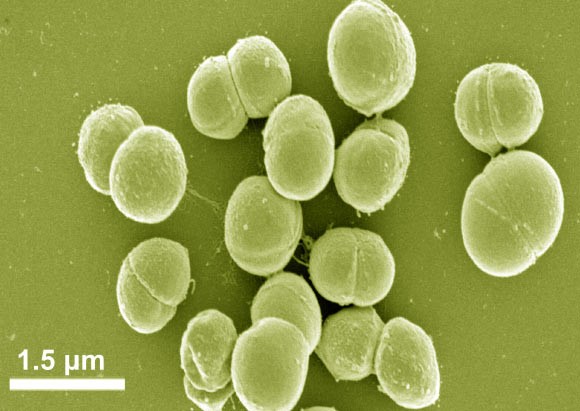
Cold- and salt-adapted bacterium Planococcus halocryophilus may survive and adapt to extreme conditions. Image credit: Mykytczuk, N. C., Wilhelm, R. C., & Whyte, L. G. (2012). Planococcus halocryophilus sp. nov., an extreme sub-zero species from high Arctic permafrost. International Journal of Systematic and Evolutionary Microbiology, 62(8), 1937-1944.
Many extraterrestrial environments are characterized by conditions that are unknown on Earth, for example, chloride and perchlorate brines near the Martian surface. A new study by Heinz et al. examined how the cold- and salt-tolerant bacterial strain Planococcus halocryophilus survives and adapts to different concentrations of NaCl and other chloride (Cl-) and perchlorate (ClO4-) solutions that could be present on Mars. While the bacteria cannot survive in highly concentrated brines, it can survive in solutions of up to 12 wt% sodium perchlorate. Furthermore, the tolerance to salts can be enhanced by a stepwise increase in the salt concentration, which suggests that the bacterium could adapt to extreme extraterrestrial environments. READ MORE